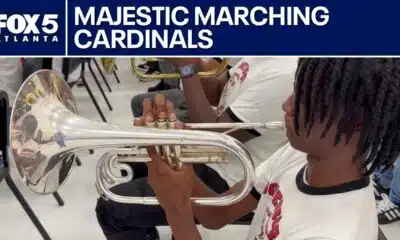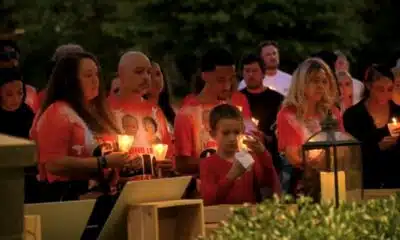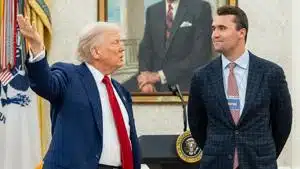News from the South - Louisiana News Feed
Louisiana universities could lose tens of millions if federal research cuts go into effect • Louisiana Illuminator
Louisiana universities could lose tens of millions if federal research cuts go into effect
by Piper Hutchinson, Louisiana Illuminator
February 12, 2025
Louisiana universities could lose tens of millions of dollars in federal funding under a proposed slash in National Institutes of Health research funding President Donald Trump’s administration has put forward.
A federal judge has temporarily blocked the Trump administration’s plan to slash “indirect cost” rates including on grants that are already approved. The ruling was issued late Friday afternoon and challenged in court Monday. The next hearing in the case is expected later this month.
If the cuts were allowed to go into effect, the impact to Louisiana would be “devastating,” said Robert Twilley, LSU’s vice president of research and economic development.
According to publicly available NIH data, Louisiana universities have active NIH grants worth about $300 million in research funding. About $60 million goes toward “indirect costs,” which are necessary to facilitate the actual research being conducted. Of that $300 million, about $211 million was awarded in fiscal year 2024. See a chart of NIH indirect cost funding by university below.
The Trump administration has proposed reducing the indirect costs covered through NIH grants from as much as 53% down to 15% for Louisiana universities, meaning they would be scrambling to fill holes totaling tens of millions of dollars or be forced to reduce their research staffs.
“At LSU alone, the immediate loss amounts to $12 million,” LSU President William Tate said in a statement. “If 60% of the cuts impact personnel, Louisiana could lose hundreds of research-active faculty members, graduate assistantships and research administration jobs.”
“NIH funding drives that progress. America must lead. Louisiana must compete. Lives depend on it,” Tate continued.
GET THE MORNING HEADLINES.
The National Institutes of Health said the policy change regarding so-called “indirect costs” is intended to align how much the federal government spends on those items with how much private organizations allocate. Twilley said indirect costs pay for things such as infrastructure, environmental safety, waste disposal, libraries and graduate student support.
Twilley said part of what the public doesn’t understand about indirect costs is that they also cover administration the federal government asks universities to handle when granting funds for research.
“If we don’t get those indirect costs, then how can we perform the research to be compliant with the federal regulations that they’re requiring of us?” Twilley said in an interview.
He suggested that if the concern is that money the federal government pays for indirect costs is being wasted, LSU could provide more information on the spending on each grant as a way to ensure more accountability.
Tulane University receives the most NIH funding out of any Louisiana institution, including a total of $133 million in fiscal year 2024. Tulane, LSU and the University of Louisiana Lafayette are the state’s three R1 universities, meaning they have very high levels of research activity.
LSU also has medical schools in Shreveport and New Orleans that conduct NIH-funded research, as well as the Pennington Biomedical Research Center in Baton Rouge, which has a complete research focus and does not enroll students.
“In light of this policy change and its potential impact, we are contacting our Congressional leaders, who have long supported the biomedical research conducted by Tulane and our fellow universities throughout the state,” Tulane President Michael Fitts wrote in an email to faculty earlier this week “We are underscoring to our elected officials the importance of research in saving and improving lives, in preventing and curing disease and in creating jobs and opportunities for all Louisianians.”
Republican U.S. Sen Bill Cassidy, a medical doctor who previously taught at LSU Health Sciences Center New Orleans, told STAT News Louisiana would suffer from the NIH funding cuts.
A spokesman for U.S. Rep. Julia Letlow, R-Start, whose district encompasses LSU, did not respond to a request for comment.
The research universities conduct has an economic impact as well as an academic one. Federal research grants directly support hundreds of graduate assistants and other employees at universities. Tate estimates the economic impact of NIH funding to LSU is around $550 million. Fitts noted that Tulane’s economic impact to Louisiana is $5.2 billion.
If the NIH cuts were allowed to go into effect, Twilley predicts other federal agencies would follow, leading to even further reductions in higher education.
The proposed NIH cuts are not the only way Trump’s proposals could impact Louisiana universities. A $22 million project involving the LSU AgCenter has been paused while the administration reviews spending at the U.S. Agency for International Development (USAID).
!function(){“use strict”;window.addEventListener(“message”,(function(a){if(void 0!==a.data[“datawrapper-height”]){var e=document.querySelectorAll(“iframe”);for(var t in a.data[“datawrapper-height”])for(var r=0;r YOU MAKE OUR WORK POSSIBLE. Louisiana Illuminator is part of States Newsroom, a nonprofit news network supported by grants and a coalition of donors as a 501c(3) public charity. Louisiana Illuminator maintains editorial independence. Contact Editor Greg LaRose for questions: info@lailluminator.com.
News from the South - Louisiana News Feed
Saturday 10 PM Tropics Update: One far-off tropical wave to watch
SUMMARY: A tropical wave near Africa is emerging over the Atlantic but remains disorganized. The National Hurricane Center gives it a 60% chance to develop into a depression or tropical storm, possibly becoming Gabrielle. This system may move northward, staying over the open Atlantic and away from the Gulf, posing no immediate threat. Since the last named storm in late August, stable air, dry conditions, and increased wind shear have suppressed tropical activity in the Atlantic. The next storm names are Gabrielle, Humberto, and Imelda, with only the current wave showing potential for development at this time.
Meteorologist Alexandra Cranford tracks a lone disturbance with a chance of development on Saturday night, September 13, 2025.
News from the South - Louisiana News Feed
Haynes wanted in on Wildlife bribery scheme too, informant says
SUMMARY: Dusty Guidry, a former consultant who pleaded guilty to accepting $800,000 in bribes, testified that Assistant District Attorney Gary Haynes sought involvement in a bribery scheme at the Louisiana Department of Wildlife & Fisheries. Haynes, on trial for conspiracy, bribery, money laundering, and obstruction, was previously appointed to run Lafayette’s pretrial diversion program after supporting DA Don Landry. Guidry revealed Haynes pressured him to include him in a similar diversion program scheme at Wildlife & Fisheries, receiving checks totaling $90,000. The scheme involved splitting bribes among Guidry, vendor Leonard Franques, and former department secretary Jack Montoucet, who has also been charged. The statewide program never launched.
Read the full article
The post Haynes wanted in on Wildlife bribery scheme too, informant says appeared first on thecurrentla.com
News from the South - Louisiana News Feed
OPPJ Comprehensive Plan
SUMMARY: The Ouachita Parish Police Jury is conducting a series of community meetings to gather public input for their comprehensive plan guiding future growth. Police Jury members, including Larry Bratton from District D, emphasize the importance of reflecting residents’ voices in the master plan. Community members participated in interactive stations, allocating resources to priorities like infrastructure and downtown development, to help shape goals for the next 2, 5, and 20 years. Landscape architect Matt Pizatella and partners from Atlas support the effort. Bratton stresses that without proactive planning, the parish risks costly and less beneficial outcomes in the long term.
OPPJ Comprehensive Plan
-
Local News7 days ago
Russian drone incursion in Poland prompts NATO leaders to take stock of bigger threats
-
News from the South - North Carolina News Feed6 days ago
What we know about Charlie Kirk shooting suspect, how he was caught
-
Local News Video7 days ago
Introducing our WXXV Student Athlete of the Week, St. Patrick’s Parker Talley!
-
News from the South - North Carolina News Feed6 days ago
Federal hate crime charge sought in Charlotte stabbing | North Carolina
-
The Center Square7 days ago
Weapon recovered as manhunt continues in Kirk assassination investigation | National
-
News from the South - Arkansas News Feed5 days ago
NW Arkansas Championship expected to bring money to Rogers
-
News from the South - Tennessee News Feed7 days ago
Middle Tennessee State University dean filed over Kirk comments | Tennessee
-
News from the South - Alabama News Feed7 days ago
News 5 NOW at 8:00am | September 11, 2025















































